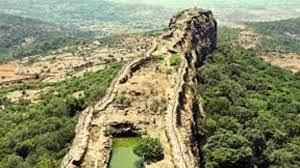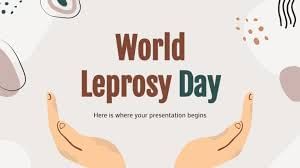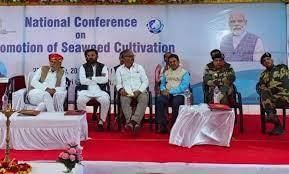Weekly Current Affairs (1st to 7th February 2024) Part - 1 | General Test Preparation for CUET UG - CUET Commerce PDF Download
Maratha Military Landscapes
What defines the Maratha Military Landscapes?
- The 'Maratha Military Landscapes' constitute a network of 12 forts and fortifications that exemplify the remarkable military system and strategy of the Maratha rulers during the 17th-19th centuries. These include Salher Fort, Shivneri Fort, Lohgad, Khanderi Fort, Raigad, Rajgad, Pratapgad, Suvarnadurg, Panhala Fort, Vijaydurg, Sindhudurg in Maharashtra, and Gingee Fort in Tamil Nadu.
- This nomination places the Maratha Military Landscapes of India on the Tentative List of World Heritage sites for 2021, marking the sixth cultural property nominated from Maharashtra for inclusion in the World Heritage List.
- These forts, ranging in hierarchy, scale, and typological features, are a product of integrating the landscape, terrain, and distinctive physiographic characteristics of the Western Ghats (Sahyadri Hills), the Konkan Coast, Deccan Plateau, and the Eastern Ghats in the Indian Peninsula.
- While Maharashtra boasts more than 390 forts, only 12 have been selected under the Maratha Military Landscapes of India, with 8 forts protected by the Archaeological Survey of India (ASI), including Shivneri Fort, Lohgad, Raigad, Suvarnadurg, Panhala Fort, Vijaydurg, Sindhudurg, and Gingee Fort. Salher Fort, Rajgad, Khanderi Fort, and Pratapgarh are protected by the Directorate of Archaeology and Museums, Government of Maharashtra.
- Within the Maratha Military Landscapes of India, hill forts such as Salher Fort, Shivneri Fort, Lohgad, Raigad, Rajgad, and Gingee Fort stand out, alongside Pratapgad, a hill-forest fort, Panhala, a hill-plateau fort, Vijaydurg, a coastal fort, and Khanderi Fort, Suvarnadurg, and Sindhudurg, island forts.
- The Maratha Military ideology traces its roots back to the 17th century under the rule of Chhatrapati Shivaji Maharaj in 1670 CE, persisting through successive rulers until the conclusion of the Peshwa rule in 1818 CE.
What is the Process for the UNESCO World Heritage List nomination?
- The World Heritage List is a list of sites that have outstanding universal value for humanity and nature, as determined by the United Nations Educational, Scientific and Cultural Organization (UNESCO).
- Before 2004, World Heritage sites were selected based on six cultural and four natural criteria.
- In 2005, UNESCO modified these criteria and now has one set of ten criteria. Nominated sites must be of "outstanding universal value" and must meet at least one of the ten criteria.
- There are two categories of nomination cultural and natural criteria, the Maratha Military landscapes is nominated in the category of cultural criteria.
- There are six criteria (i to vi) for cultural sites and four criteria (vii to x) for natural sites for inclusion in the World Heritage List.
- The Maratha Military Landscapes of India is nominated under Criterion (iii), Criterion (iv) and Criterion (vi).
- A country can't nominate a property to the World Heritage List unless it's been on its Tentative List for at least one year.
- A Tentative List is an inventory of potential World Heritage Sites that a country submits to UNESCO. After a property is on the Tentative List, the country can nominate it for the World Heritage List. The World Heritage Committee will review the nomination.
- The list of World Heritage Sites is maintained by the International 'World Heritage Programme', administered by the UNESCO World Heritage Committee.
Free Movement Regime
- This decision is driven by a desire to navigate the intricate nexus of historical, cultural, and security factors.
Understanding the Free Movement Regime:
Historical Background:
- A significant portion of India's northeast region was formerly under Burmese control until the Treaty of Yandaboo in 1826, which delineated the current India-Myanmar border.
- Signed by General Sir Archibald Campbell representing the British and Governor of Legaing Maha Min Hla Kyaw Htin representing the Burmese, the treaty concluded the First Anglo-Burmese War (1824-1826).
- However, this border division separated communities with shared ethnicities and cultures, including the Nagas in Nagaland and Manipur, as well as the Kuki-Chin-Mizo communities in Manipur and Mizoram, without their consent.
- Presently, India and Myanmar share a 1,643 km border spanning Manipur, Mizoram, Nagaland, and Arunachal Pradesh, with only 10 km fenced in Manipur.
- Understanding the Free Movement Regime:
- The FMR was established in 2018 under India's Act East policy, allowing cross-border movement up to 16 km without requiring a visa.
- Individuals residing in border areas need a one-year border pass for stays of up to two weeks in the neighboring country.
- Its objectives included facilitating local border trade, enhancing access to education and healthcare for border residents, and strengthening diplomatic relations.
Potential Drivers for Reevaluating the FMR:
Security Considerations:
- Escalating Infiltration: Concerns have emerged regarding the inflow of illegal immigrants, notably the Chin and Naga communities, as well as Rohingyas from Myanmar, potentially straining resources and altering local demographics.
- Trafficking of Drugs and Arms: The porous border facilitates the illicit movement of narcotics and weapons, posing internal security threats to India and fueling criminal activities.
- In 2022, Manipur reported 500 cases filed and 625 individuals arrested under the Narcotic Drugs and Psychotropic Substances (NDPS) Act, according to data from the Chief Minister’s Office.
- Insurgency Operations: The FMR has been exploited by insurgent groups in northeastern India, enabling easy cross-border traversal and evading capture.
- For instance, the Kuki National Organisation (KNO) and Kangleipak Communist Party-Lamphel (KCP-Lamphel) in Manipur.
Socio-economic and Regional Concerns:
- Preservation of Cultural Identity: Worries persist about maintaining indigenous cultures and traditions in border regions, potentially jeopardized by heightened migration.
- Environmental Deterioration: Deforestation and unlawful resource extraction along the border are linked to unregulated cross-border movements.
- Regional Dynamics: China's increasing influence in Myanmar and its potential impact on border security introduce additional complexities to the scenario.
- What are the Major Aspects of India-Myanmar Relations?
- Historical and Cultural Ties: India and Myanmar share a long history dating back centuries, with cultural and religious connections deeply rooted in Buddhism.
- Treaty of Friendship, 1951 forms the foundation of their diplomatic relations.
- Economic Cooperation: India is Myanmar's 4th largest trading partner and a major source of investment.
- The projects in which India has been involved in Myanmar include the Kaladan Multimodal Transit Transport Project, the Trilateral Highway Project and restoration and conservation of Ananda Temple in Bagan (completed in 2018).
- Disaster Relief: India has responded promptly and effectively in rendering assistance following natural calamities in Myanmar like Cyclone Mora (2017), earthquake in Shan State (2010) and the outbreak of influenza virus in Yangon in July-August 2017.
Way Forward
- Focus on Shared Interests: Continuing and expanding economic cooperation in areas like infrastructure, energy, and trade could benefit both nations, fostering deeper ties beyond political differences.
- Also, encouraging cultural exchanges, religious tourism can build trust and understanding between the people of both countries.
- Comprehensive Border Management: India needs to develop a comprehensive and balanced approach to border management that considers security concerns while facilitating legitimate cross-border activities with Myanmar.
- Supporting a Democratic Transition: India's engagement in Myanmar should ultimately aim to support a peaceful transition to democracy in Myanmar, even if the process is slow and challenging.
A stable and democratic Myanmar aligns with India's vision for regional stability and prosperity, making this a long-term strategic goal.
World Leprosy Day
What's the Purpose of World Leprosy Day?
Under the theme "Beat Leprosy," World Leprosy Day 2024 aims to combat the stigma surrounding leprosy and uphold the dignity of those affected by the disease. Its primary objective is to raise awareness among the public regarding the misconceptions surrounding leprosy and its treatability.
Understanding Leprosy:
Overview:
- Leprosy, or Hansen's disease, is a chronic infectious condition caused by the bacterium "Mycobacterium leprae," affecting various bodily systems including the skin, peripheral nerves, upper respiratory tract mucosa, and eyes. It can manifest across all age groups, from childhood to old age.
Transmission:
- Leprosy is not hereditary but is transmitted through respiratory droplets from the nose and mouth during close, prolonged contact with untreated cases.
Classification:
- Leprosy is categorized into paucibacillary (PB) and multibacillary (MB) forms. PB includes smear-negative cases with lower bacterial loads, while MB includes smear-positive cases with higher infectivity.
Treatment:
- The disease is curable, especially when treated during its early stages. The recommended treatment involves a combination of three drugs: dapsone, rifampicin, and clofazimine, known as multi-drug therapy (MDT). Since 1995, MDT has been provided free of charge to patients worldwide through the World Health Organization (WHO).
Global Leprosy Scenario:
- Leprosy remains a neglected tropical disease prevalent in over 120 countries, with more than 200,000 new cases reported annually. In 2022 alone, 182 countries recorded over 165,000 cases, with a majority concentrated in the WHO African and South-East Asia Regions.
Leprosy in India:
- India achieved the elimination of leprosy as a public health concern by WHO standards in 2005, with less than one case per 10,000 population nationally. However, the disease persists as an endemic in various states and union territories.
Initiatives:
Global Efforts:
- The Global Leprosy Strategy launched by WHO in 2016 aims to rejuvenate efforts to control leprosy and prevent disabilities, particularly among affected children.
- The Global Partnership for Zero Leprosy (GPZL) unites individuals and organizations committed to ending leprosy worldwide.
Indian Initiatives:
- The National Strategic Plan (NSP) & Roadmap for Leprosy (2023-27) aims to achieve zero leprosy transmission by 2027, aligning with Sustainable Development Goal (SDG) 3.3 to combat infectious diseases.
- The National Leprosy Eradication Programme (NLEP), introduced in 1983, focuses on reducing disease burden, preventing disabilities, and enhancing public awareness about leprosy and its curability.
EPFO’s Employer Rating Survey
Understanding the Employees’ Provident Fund Organisation (EPFO):
- EPFO is a governmental body responsible for managing provident fund and pension accounts for employees in the organized sector in India.
- It operates under the framework of the Employees’ Provident Fund and Miscellaneous Provisions Act, 1952, facilitating the establishment of provident funds for employees in various establishments.
- Administered by the Ministry of Labour & Employment, Government of India, EPFO stands as one of the world's largest social security organizations in terms of clientele and financial transactions volume.
Exploring the Employer Rating Survey:
Overview:
- Launched during the "Women in the Workforce for Viksit Bharat" event by EPFO and MoWCD, the survey aims to leverage data and feedback from female employees to inform policymaking on women's workforce participation.
- Its primary goal is to assess and rate employers based on their commitment to fostering women's involvement in the workforce, evaluating the measures and facilities provided to create a conducive work environment for women.
Rating Criteria:
- Employers undergo evaluation based on their support for women's workforce participation, serving as a tool to monitor progress and efforts towards building inclusive workplaces.
Survey Questionnaire:
- The survey questionnaire delves into organizational details, querying aspects such as the provision of Internal Complaints Committees for addressing Prevention of Sexual Harassment (POSH) formalities, availability of childcare facilities, and transportation options during late hours.
- With the questionnaire disseminated to approximately 300 million customers nationwide, the survey represents a comprehensive endeavor to gather extensive data.
Equal Pay and Work Flexibility:
- In addition to assessing employers' support structures, the survey also addresses the provision of equal pay for equal work and the availability of flexible or remote working arrangements for women.
- Understanding Women's Labour Force Participation in India:
- While the female Labour Force Participation Rate (LFPR) has shown improvement in recent years, a significant portion of this increase is attributed to unpaid work, particularly in household enterprises.
- LFPR indicates the percentage of the working-age population engaged in either employment or actively seeking work.
- Based on the Periodic Labour Force Survey (PLFS), the female participation rate rose from 17.5% in 2017-18 to 27.8% in 2022-23, with many categorized as "helpers in household enterprises" without regular pay for their contributions.
- In contrast, the LFPR for males in India increased from 75.8% in 2017-18 to 78.5% in 2022-23, indicating a narrower gender gap in workforce participation.
2500-year-old Solution to Fight Climate Change
Understanding the Study Approach:
- Utilizing a comprehensive methodology, the researchers examined various data sources, including archaeological discoveries, plant remnants, and isotopic data.
- Furthermore, they conducted dating analyses employing isotopes and radiocarbon dating techniques on grains and charcoal samples.
Key Highlights of the Study:
Long-Term Climate Adaptation:
- In Gujarat's semi-arid region, Vadnagar's historical significance lies in its demonstration of a resilient agricultural economy that thrived over 2500 years despite fluctuations in monsoon rainfall patterns.
- Throughout the historic, medieval (800 CE-1300 CE), and post-medieval (Little Ice Age) periods, Vadnagar experienced varying degrees of monsoon precipitation.
Robust Crop Economy:
- Despite these fluctuations, the post-medieval era (1300-1900 CE) witnessed the establishment of a robust crop economy centered around small-grained cereals, notably millets (C4 plants).
- The adoption of C4 plants reflects the community's adaptive strategy in response to prolonged weakening of the summer monsoon during the Little Ice Age.
- C4 plants employ a specific photosynthetic pathway, known as the C4 carbon fixation pathway, tailored for hot and arid climates and environments prone to photorespiration.
Diversification of Food Resources:
- The diversification of food crops and socio-economic practices allowed ancient societies to navigate the challenges posed by erratic precipitation patterns and periods of drought, showcasing their resilience and adaptive capabilities.
What is the Significance of this Study?
- It highlights the importance of understanding historical climate patterns and human responses to them.
- It suggests that past famines and societal collapses were not solely the result of climate deterioration but were also influenced by institutional factors.
- Insights from the study can inform contemporary climate change adaptation strategies, emphasizing the importance of understanding historical climate patterns and human responses.
What are India's Climate Change Mitigation Initiatives?
National Action Plan on Climate Change (NAPCC):
- Launched in 2008 to address climate change challenges in India.
- Aim to achieve low-carbon and climate-resilient development for India.
- There are 8 national missions forming the core of the NAPCC which represent multi-pronged, long term and integrated strategies for achieving key goals in climate change. These are-
- National Solar Mission
- National Mission for Enhanced Energy Efficiency
- National Mission on Sustainable Habitat
- National Water Mission
- National Mission for Sustaining the Himalayan Ecosystem
- National Mission for A Green India
- National Mission for Sustainable Agriculture
- National Mission on Strategic Knowledge for Climate Change
Nationally Determined Contributions (NDC):
- India's commitments to reduce greenhouse gas emissions and adapt to climate change.
- Pledged to reduce the emissions intensity of GDP by 45% by 2030 from 2005 levels and generate 50% of electricity from non-fossil fuel sources by 2030.
- Pledged to create additional carbon sink and achieve net zero emissions by 2070.
National Adaptation Fund on Climate Change (NAFCC):
- Established in 2015 to provide financial assistance to state governments for implementing adaptation projects in various sectors.
State Action Plan on Climate Change (SAPCC):
- Encourages all states and union territories to prepare their own SAPCCs based on their specific needs and priorities.
- SAPCCs outline strategies and actions for addressing climate change at the sub-national level.
- Aligned with the objectives of the NAPCC and the NDC.
National Conference on Promotion of Seaweed Cultivation
Understanding Seaweeds:
Overview:
- Seaweeds, classified as macroscopic, multicellular marine algae, exhibit a diverse spectrum of hues, encompassing red, green, and brown varieties. Often hailed as the 'Medical Food of the 21st Century,’ they thrive primarily in intertidal regions, shallow and deep sea waters, estuaries, and backwaters.
Ecosystem Role:
- Noteworthy among their roles is the formation of underwater forests, known as kelp forests, fostering marine biodiversity by serving as nurseries for various aquatic organisms such as fish, snails, and sea urchins.
Seaweed Species in India:
- India boasts an impressive array of approximately 844 reported seaweed species in its coastal waters. Specific species like Gelidiella acerosa, Gracilaria spp., Sargassum spp., Turbinaria spp., and Cystoseira trinodis are cultivated for the production of agar, alginates, and liquid seaweed fertilizer.
Functional Applications:
- Agar, derived from red algae, finds utility as a thickening and gelling agent in culinary applications such as jellies and jams, while alginates, sourced from brown algae, serve as thickeners and stabilizers in products like ice cream and sauces.
Challenges and Opportunities:
- Despite the presence of 46 seaweed-based industries across India, comprising 21 for agar and 25 for alginate production, operational efficiency is impeded by raw material shortages.
Key Seaweed Beds:
- Abundant seaweed resources are concentrated along the coasts of Tamil Nadu and Gujarat, as well as around the Lakshadweep and Andaman & Nicobar Islands. Notable beds are situated around Mumbai, Ratnagiri, Goa, Karwar, Varkala, Vizhinjam, Pulicat, and Chilka.
Significance:
Environmental Role:
- Seaweeds function as bio-indicators, mitigating marine chemical damage and restoring ecosystem equilibrium by absorbing excess nutrients. Additionally, they exhibit carbon capture capabilities, potentially aiding in climate change mitigation.
Economic Impact:
- Seaweed farming emerges as a sustainable livelihood avenue, particularly benefiting coastal communities, including women and small-scale farmers, owing to its low investment requirements and swift returns.
Government Endeavors:
- Initiatives such as the Seaweed Mission and commercialization efforts by the Indian Council of Agricultural Research (ICAR)-Central Marine Fisheries Research Institute (CMFRI) underscore India's commitment to promoting seaweed cultivation and fostering value addition in this sector.
- Additionally, the establishment of a Multi-Purpose Seaweed Park in Tamil Nadu exemplifies government efforts toward leveraging seaweed resources for economic growth and environmental sustainability.
|
164 videos|800 docs|1160 tests
|
FAQs on Weekly Current Affairs (1st to 7th February 2024) Part - 1 - General Test Preparation for CUET UG - CUET Commerce
| 1. What is the significance of Maratha Military Landscapes? |  |
| 2. What is the Free Movement Regime? |  |
| 3. What is the significance of World Leprosy Day? |  |
| 4. What is EPFO's Employer Rating Survey? |  |
| 5. How can a 2500-year-old solution help fight climate change? |  |



























